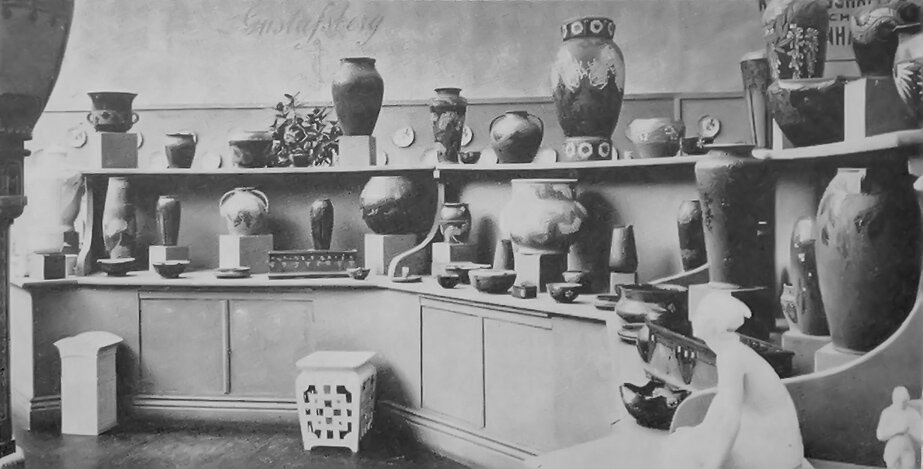
Josef Ekberg - Ceramicist
1877 - 1945 | Sweden
He is known for his role in the development of the famous Sgraffito technique and the use of luster glazes in ceramics.
Josef Ekberg was born in 1877 into an artistic family. When Ekberg was 18 years old he became a pupil at the Gustavsberg where Gunner Goson Wennerberg taught and mentored him. During his spare time he painted as a hobby and sent his art to Herrmods correspondence school for evaluation.
During his time with Wennerberg, they developing and refining the sgraffito technique in the late 1890s. The technique consisted of two successive layers of contrasting slip applied to the clay body. Then the top layer was selectively removed to reveal the underlying layer & create the design, a sinuous vine & floral decoration in this case.
Josef Ekberg and Gunnar Wennerberg
When Wennerberg left Gustavsberg in 1908, Ekberg suddenly found himself as the lead designer and artist. This gave him the opportunity to travel to Germany where he participated in his first exhibition in 1909. He displayed a new line of vases with hand painted floral designs. The technique for these vases consisted of plunging them into a corrosive acid before the final glazing which resulted in the color looking dull.
By spring of 1914 Ekberg was the dominating artist in the Baltic Exhibition in Malmo. Alongside his showcase of work was that of artist Elsa Engestrom (worked at Gustavsberg from 1912-1916) showcasing stoneware and flintware pieces. This marked Ekberg’s last exhibition in his career.

Original factory around 1827
Current day factory
Situated 20km from Stockholm, in the beautiful archipelago, Gustavsberg has continually produced genuine hand-made porcelain using methods dating back to 1827. Today the factory is privately owned but still responsible for being Sweden’s last remaining porcelain producer as well as the only specialist in the production of fine bone china.
Family History
Ekberg’s father, Bernhard Ekberg, worked as a porcelain painter from the mid 1840’s to 1885. He also worked as a parish clerk, a musician and was a very skilled handyman. Bernhard was married twice and their first son was named Arvid. He worked with a patterned painting at Gustafsberg. Amond the many designs he did was a green and gold decoration called Waxio. Josef Ekberg’s brothers Daniel and David worked at Gustafsberg as porcelain founders and were both musicians who worked at local theaters. His brother Simon moved to the country of the Narke where he spent his life working as a baker.
In 1980 Josef Ekberg married a porcelain painter named Elsa Pettersson. They had two children, Iris and Borje. Ekberg’s daughter, Iris, worked as secretary in the office of Gustafsberg’s excecutive manager from 1937 to 1969. Iris also painted as a hobby. His son, Borje, was educated as a decorator followed that career. His hobbies included linoleum prints, painting and drawing.
Ekberg is currently represented at the Swedish National Museum of Art and Design, Victoria & Albert in London, The Minneapolis Institute of Arts, and the Porslinsmuseet in Gustavsberg.










